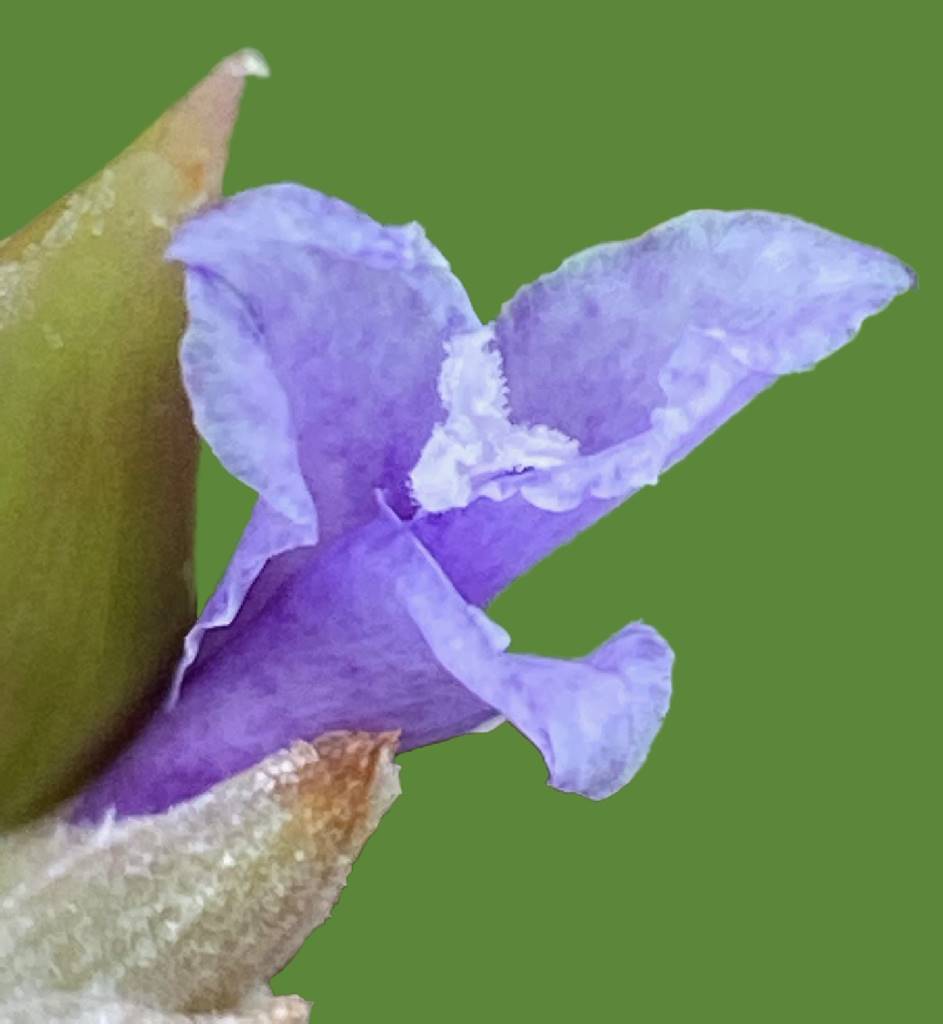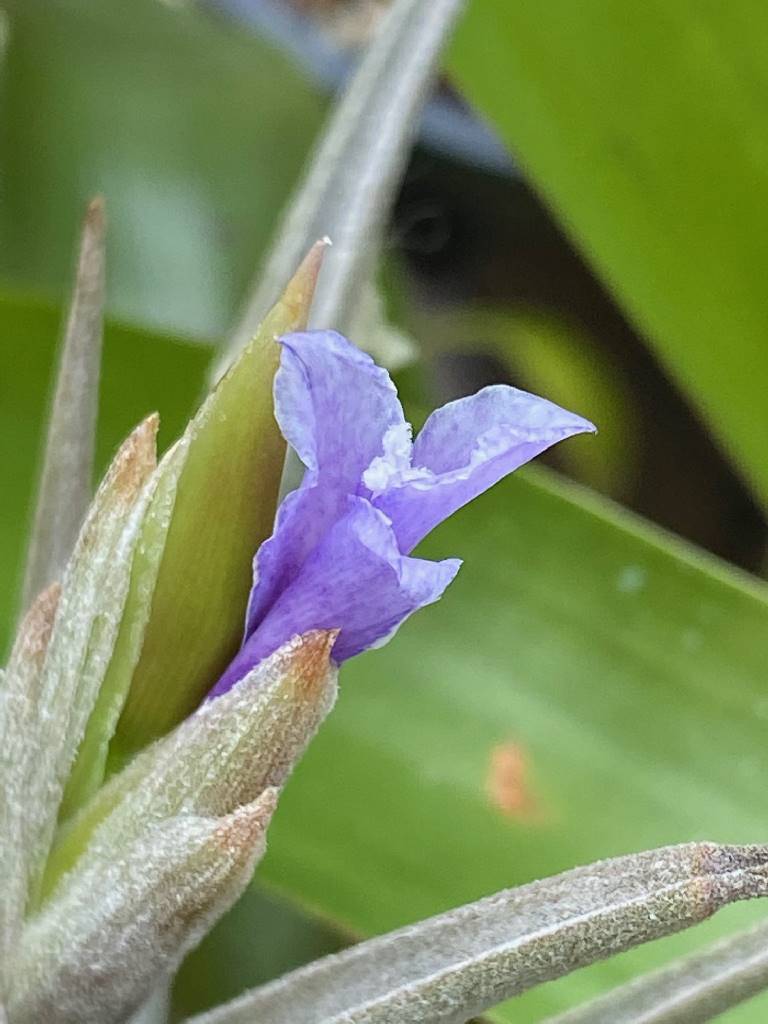



Is this species protogynous? |




Is this species protogynous? |
Andrew Flower ... "This doesn't seem to be uncommon in tillandsias - when artificially transferring pollen around I often notice on an individual flower that the stigma is receptive before the pollen matures: with many of them the receptive stigma exerts beyond the immature anthers for some days and then the anthers extend out beyond the exhausted stigma and mature their pollen. Don't recall anyone recording it though. Perhaps I'll take some sequence photos.
Seeing as T. cochabambae has been raised, I have these behaving interestingly at present so I'll pull out the photos and post later tonight. My collection dates back to the Lotte/Denis Cathcart expedition to Bolivia.
protogynous: "With receptive stigmas before the anthers open" Collegiate Dictionary of Botany, Delbert Swartz, 1971. (well I had to look it up :-)"
Dale Dixon ... "Iíd like to see images of this species that you have.
The inflorescence did not protrude much past the leaves on my plant. I wondered if this was because it initiated during winter?
Peter Tristram - do you recall if your parent plant of this one has an inflorescence of this size or is mine an anomaly?"
Andrew Flower ... "Dale - Need to know the diameter of the flower on your plant, please, so I can compare to mine.
I was referring to multiple species with the protogynous habit - wIll look out for some sample(s) to photograph. In case you meant photos of my T. cochabambe currently flowering, will send later."
Dale Dixon ... "Hi Andrew, Iíve just measured the flower diameter. It is 12.5mm diam., petal tip to petal tip. It hasnít opened any further overnight. Itís very overcast and rainy here today. Iíll check again this afternoon to see if it opens more.
I did a bit more reading overnight and was interested in the description of the length of the rachis. The rachis can get to 12 cm long. However, the description states that the rachis is not visible at flowering (see excerpt below) which seems to correlate with my specimen. I note from images on Bromeliads in Australia that the rachis is certainly elongated, particularly the plants of Bruceís. Does The rachis elongate after all flowers are spent?
INFLORESCENCE - simple (always ?) to 12 cm long, bent; peduncle - erect to bent, to 6 cm long, densely enclosed by the stem bracts; peduncle-bracts - leaflike at the bottom, the upper ones forming sheaths with short tips, erect, almost enveloping the stem, green, dense white lepidote, at the bottom naked, becoming similar to the flower bracts; spikes - bent, to 5.5 cm long, 1.5 cm wide, acuminate, complanate, ca 6 flowered. after flowering the flower fades at the top; rachis - at flowering not visible, green, naked, flat edged."
Peter Tristram ... "Interesting discussion. I bet thereís a paper on this topic, somewhere! How can you actually be certain that the stigma is receptive? Generally, as soon as the petals open, especially if cross-pollinating. Seed is often set so maybe stigma is receptive either before flower opens or as it opens. Often the anthers split much later too. The style can extend into the anthers or beyond the anthers in some species. I know Bob Hudson has referred to this at the TPE in many discussions, often regarding ionanthas! If fertilisation hasnít occurred style will elongate in the expectation of receiving foreign pollen. These xiphioides group species vary but I have certainly seen the style elongate and poke out from the petals, same with Anoplophylum species like aeranthos, where the style really elongates over time and the stigma seems receptive at any stage. Research needed?"
Ross Little ... "Dale asked on Thursday 10/9/2020: Is this species protogynous? Has protogyny been recorded in Tillandsia?
As Peter suggested a little research needed so I went and did some reading because I like answers:
In part from: Biology of the Bromeliads by David Benzing. - A protogynous flower becomes receptive before the adjacent stamens are sufficiently developed to shed pollen. The system works because the presence of young and older flowers in the population at the same time makes crossing possible. In some cases a fail-safe device is present. Should a precocious pistil fail to intercept outcrossed pollen, it remains receptive long enough to allow selfing after the associated anthers mature. One blossom every few days seems to be the rule in tillandsioids with unbranched inflorescences and also in some with compound flowering stalks. Many Tillandsias (subgenus Tillandsia) appear to be protogynous with the style emerging from the corolla tube several hours before the anthers dehisce."